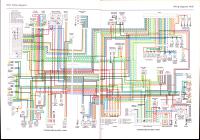torch
Well-known member
I didn't realize there were differences between the Canadian and US versions in 2006 and the FSM I picked up was from the US. Does anyone have a Canadian version wiring diagram?


Web site was down due to a power cut to my house, out of my control. Sorry about that. Should be ok now.Thanks for the effort, however the link is not working at this end. "The webpage at [quote]https://atrophy.lock.net/pi/extras/index.php?image=2006_FJR_circuit.jpg&size=1[/quote] might be temporarily down or it may have moved permanently to a new web address."
I don't know what differences there are. Two I have heard mention are the security system and supposedly the Canadian model is pre-wired for heated grips.









Please be aware, this is taken from a copyrighted publication. I am not sure that hosting it on what is essentially a commercial forum web site is legal.Does this work for you?
I don't think the Haynes manual comes in any guise other than UK, and only up to 2013 (not that that concerns your 2006). Having said that, in many ways it is better than the Yamaha manual, it's far more practical, tells you how to do stuff by someone who's done it on a bike taken off the street, as opposed to the Yamaha that is aimed at fully trained professionals and more how the bike was built in the factory.The original link works fine from home. Thanks!
Re: copyright: small excerpt of the total work, used for educational purposes and private study = legal fair use.
It is important to respect the copyright of authors, don't get me wrong. But the rights go both ways and there are far too many players willing to intimidate users from exercising their legitimate rights too.
I just needed to study the difference in one small part of the circuit (heated grips). And now that I know the Haynes manual is more representative of my variation in some ways than the Yamaha manual I purchased, I may even go out and buy a Haynes, especially if I can find one tailored to the Canadian FJR.

I think you misunderstand this a little. If your grips are in parallel and draw a total of 3 amps, then the total power is 3 x 12 = 36 watts, each grip has half the total current, so 1.5 amps, at 12 volts, 18 watts. To get the same power in series grips, that's still 36 watts, so still 3 amps at 12 volts, each grip now has 3 amps at 6 volts, 18 watts each. Still a total of 3 amps from the controller.Warmth is actually a function of wattage, so it is possible that the Yamaha ones are designed to draw twice the current at half the voltage to produce the same wattage. The ones I am using draw about 3 amps total at 12v each (nomimal). So maybe the Yamaha ones are designed to draw 6 amps total at 6 volts each.
But I doubt it. That would require a more expensive controller.
I think you misunderstand this a little. If your grips are in parallel and draw a total of 3 amps, then the total power is 3 x 12 = 36 watts, each grip has half the total current, so 1.5 amps, at 12 volts, 18 watts. To get the same power in series grips, that's still 36 watts, so still 3 amps at 12 volts, each grip now has 3 amps at 6 volts, 18 watts each. Still a total of 3 amps from the controller.
Your 8 ohms is right for the parallel grips, but it's 2 ohms each, not 4, for the series.That said, to draw 18 watts per grip, the heaters must be 8 ohms each. What I should have said is that if the Yamaha grips are also 8 ohms, they will deliver half the power per grip as they are wired in series.
Of course, if the Yamaha ones are 4 ohms each, then the output would be equivalent.
You are correct again. I don't know what's wrong with me this week -- I should be able to do this stuff in my head, now I better start with a pencil before I start typing. That'll teach me to dash off a quick reply before bed.Your 8 ohms is right for the parallel grips, but it's 2 ohms each, not 4, for the series.
Hey, mine never actually smoked (though I did burn the palms of my hands after a few hours on the high setting).PS: I have done similar things with nichrome, making smoke units for toy trains. ;-)
Next time try feeding it with 20v <lol>Hey, mine never actually smoked (though I did burn the palms of my hands after a few hours on the high setting).
Enter your email address to join: